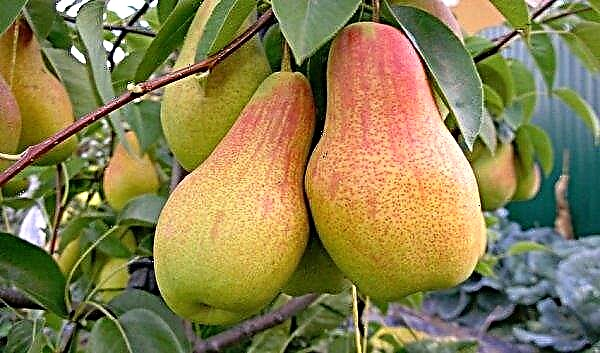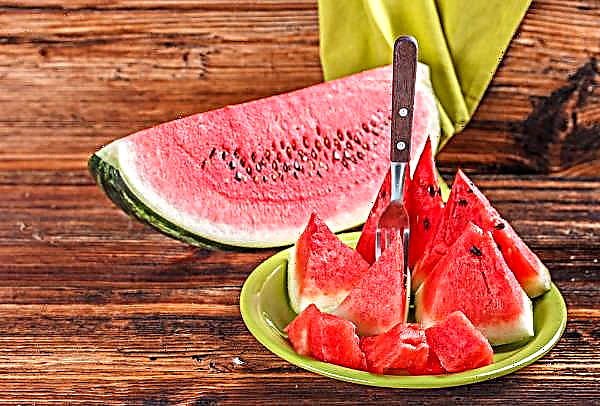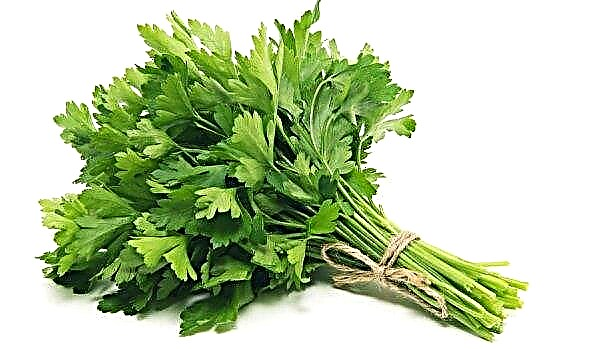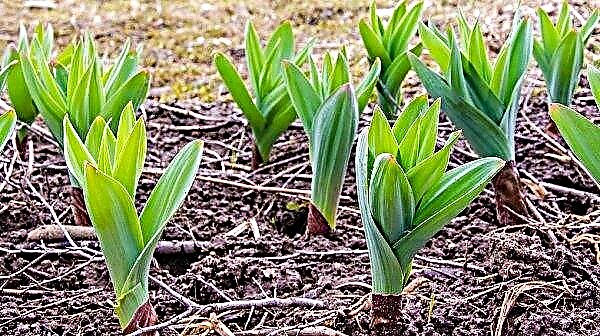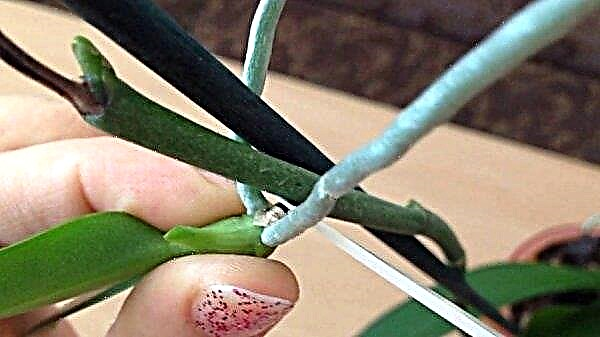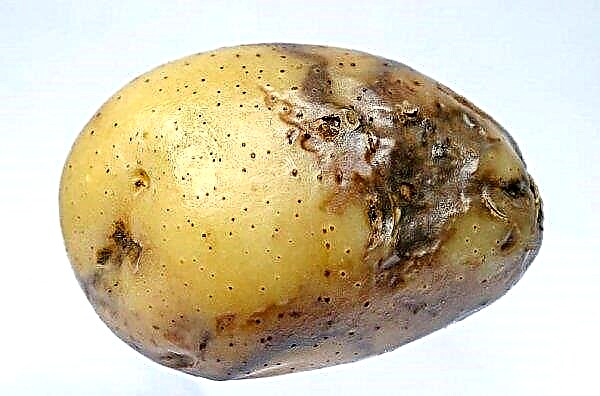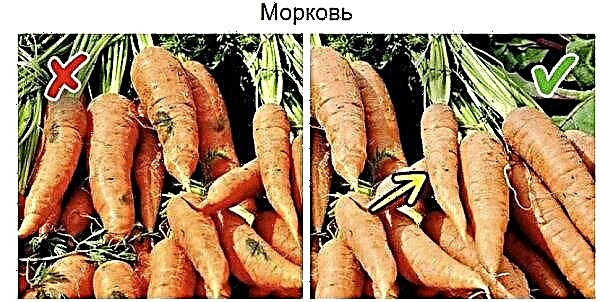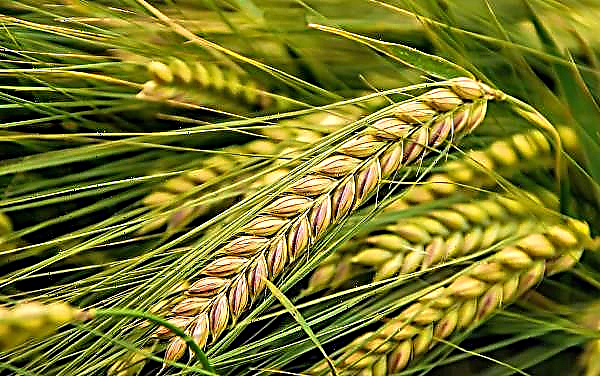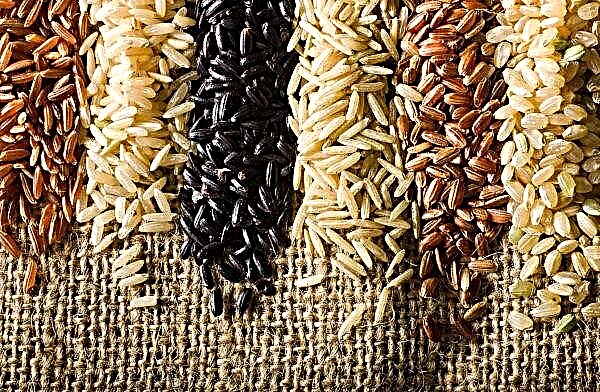An important process in cattle breeding is the care of the cow after calving, i.e., after the birth of the calf. During its development, the fetus takes the supply of minerals and nutrients from the mother, so it is extremely important to ensure calving calves proper feeding in this difficult period. The article will consider the most relevant information on the rules of feeding before and after calving.
Description of feed types
Enrich the diet of cattle with necessary vitamins and minerals can be such types of feed:
- Green feed - This is the basis of the summer diet. Fresh grass is considered the best nutrition with proteins, amino acids, vitamins. Green bean crops are especially beneficial for the cow. They are quickly absorbed by the body and restore strength.
- An alternative to green feed will be rude. It includes hay and straw. Such components are used in winter. Nutrition, vitamin composition and proteins are almost the same as in the previous form.
- Succulent feed - These are vegetables, silage, root crops. Their composition is rich in carbohydrates, which cause appetite in livestock and increase the digestibility of dry components. This food reduces the need for fluid.
- Concentrates - they mean feed, grain, bran. Without them, it is impossible to ensure the intake of protein in the body of the animal, therefore, feed mixtures must be taken into account when feeding.


General feeding rules
Each breeder is obliged to provide good nutrition to his horned wards, that is, such a diet in which animals receive the necessary nutrients in full and in the right ratio.
- Cow feed should be based on succulent feed, with a little added hay and concentrated high protein feed. The feed ratio may look like this: 50% corn silage, 22% concentrated protein feed, 20% hay and 8% fodder beets.
- If it is not possible to provide concentrated protein feed, the addition of carbamide (urea) to the food will compensate for its lack. It is added to concentrated mixtures, silage or mixed feed.
- Regardless of what exactly you feed the cow, it needs to add table salt at the rate of 10 g per 100 kg of live weight.
Did you know? The cow has no incisors and fangs in the upper jaw. She chews food due to the fact that it crushes food with lower teeth and upper palate.
How and what to feed a cow
Not only her health and further productivity, but also the state of health of the newborn calf will depend on the proper nutrition of the cow during pregnancy, immediately before calving and immediately after it. Consider how to feed a burenka during these periods that are important for it.
Steel
A pregnant cow is called one that is in a state of pregnancy. At this time, the expectant mother must be provided with a balanced diet, which will allow her to endure a healthy cub and not be very exhausted herself. Feeding pregnant cows has its own characteristics. Let's consider them in more detail.
Feeding pregnant cows has its own characteristics. Let's consider them in more detail.
- A cow should receive only benign products in which there should be no mold, rot and unpleasant odors.
- Watering and feeding occurs 3 times a day.
- Straw and hay are given in pure form, however, with the introduction of additional feed mixtures, hay must be crushed.
- The basis of the diet should be juicy food, bean hay and concentrates. An approximate diet is as follows: 4 kg of hay, 5-6 kg of haylage, about 11 kg of corn silage, 2 kg of concentrates and 50 g of table salt are given.
Important! During pregnancy, cows should not lose weight. Her weight should increase by 50–75 kg.
Before calving
Since in the second half of pregnancy the fetus begins to develop more rapidly, it is recommended that farmers give the future mother more phosphorus and calcium.
A couple of weeks before calving, you can feed a cow only with good hay, it is worth completely removing concentrated feed from the diet or reducing it to 1 kg per day. Many experts insist on the exclusion of succulent fodder from the diet before calving, since with their use in the body of the cows, excess fluid forms, which will subsequently contribute to complications during childbirth. Before calving, food is distributed as follows: 16% of roughage, 24% of concentrated feed, and 60% of silage or cereal hay. If this amount is correctly calculated on the eve of calving, then this will well affect the preparation of the cow for childbirth and the process itself.
Before calving, food is distributed as follows: 16% of roughage, 24% of concentrated feed, and 60% of silage or cereal hay. If this amount is correctly calculated on the eve of calving, then this will well affect the preparation of the cow for childbirth and the process itself.
Important! Half an hour after calving, the cow must be milked, and the calf should be milked with colostrum.
After calving
The giving birth to the female can not be immediately plentifully fed, as this can lead to diseases of the intestine and udder. On the first day, the food should be of high quality. It can be hay - let the baby eat plenty. It is absolutely necessary to give warm salted water, because during the birth the cow loses a lot of fluid. The next day, bran or pulp is added, but not more than 1 kg. For 4-5 days you can add feed.
A week after calving, they give up to 5 kg of beets and up to 6 kg of silage. The daily food intake should be gradually increased so that the cow begins to receive a standard amount of food. Typically, this transition takes up to two weeks.
Features of feeding in the winter
The winter diet of a pregnant cow is different from the summer one: they are given hay, straw, root crops, silage and mixed feed. In winter, a boleta must eat up to 15–20 kg of dry food, about 3 kg of fodder beets, 1 kg of beet pulp and up to 5–6 kg of concentrates per day.
Before serving hay and straw, chop and pour hot purified water, add a small amount of salt, beets and concentrates, a little fodder yeast. It will be right to enrich the body of the burenka with vitamins and minerals, calcium, phosphorus, and potassium are introduced for this. Water should be given warm, not lower than +15 ° C, because cold leads to diseases and a decrease in milk yield. It is forbidden to give the chilled, dirty food to the chick, because they can provoke various diseases in the animal and in the future lead to a miscarriage.
It is forbidden to give the chilled, dirty food to the chick, because they can provoke various diseases in the animal and in the future lead to a miscarriage.
The period of pregnancy and after it is the most important in the state of health of the cow and its calf, and proper feeding plays an important role here. Follow the basic rules that will help to quickly restore the strength and normal functioning of the animal's body after calving.
Reviews
At first, you need to give the cow a bucket of warm water, where you need to add a handful of salt and 400 ml. calcium chloride. The hay you give must be of very good quality. If the cow does not have any health problems and edema, then you can gradually give one kilogram of concentrates after 7 hours, you can already add feed in a day, and after four days you can bring the consumption standards to normal values. Try not to overfeed the animal, which can affect digestion. After giving birth, it seems that the animal has become thinner, but over time it will gain its weight.

